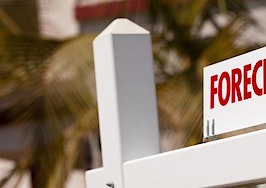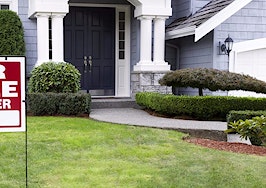- Single-family rental growth has slowed in the high-end tier as of May, while the lower end of the market has remained strong throughout the nation, at 5.3 percent annual growth.
- The Home Price Index in Texas saw a reported 6.7 percent annual increase as of June 2016, and the monthly rise in June was 0.9 percent
- Houston was the only metro that saw negative growth in single-family rentals of the large markets reported.
CoreLogic’s Market Pulse for August 2016 reports on the national market and local trends, including a new inside look at the rental sector. Similar to the data company’s CoreLogic Home Price Index (HPI) and CoreLogic Case-Shiller Index, the new Single-Family Rental Index (SFRI) measures the growth of the rental market since January 2007.
After a massive growth spurt at the tail end of 2009 and into 2011 and steady growth that continued for a few years after, the SFRI shows rental price gains have recently begun to soften.

Rent growth peaked at 4.6 percent in December 2014 over the previous year, but as of May, the growth rate was 1.2 percent lower, at an annual uptick of 3.3 percent. Following a similar pattern to that seen in the homebuying market, the rental market has seen a slow-down in the high-end sector as of recently, while lower price points are holding their own.
Rent prices at the lowest end of the spectrum were up 5.3 percent in May over the previous year, marking a three-year growth trend around 5.5 percent. At the high end of the market, rentals were up 2.1 percent annually.

Throughout the nation, single-family rental demand is moderating after years of sharp increases, and tight credit conditions are likely to keep that demand hot, particularly in the low- and mid-range price points.
Houston was the only metro that saw negative conditions in May 2016, which was especially dramatic after nearly 4 percent growth in May 2015. Oil prices and a slumping local economy are dragging down prices in the area once considered to be one of the nation’s hottest rental markets.
Now, one of the biggest shifts is taking place in the high-end rental sector, as prices dropped on a quarterly scale. Low-end rental prices are still holding pretty strong, however.

US real estate market conditions
Boomerang buyers — homebuyers returning to the market after losing a foreclosed home — have slowly but surely made their way back into the real estate market. Looking ahead to 2017, the return of boomerang buyers has the potential to be strong, the report says.
CoreLogic reports the year is nearing seven years from the foreclosure crisis peak in 2010, which means that the ‘black mark’ of foreclosure will be officially erased from consumer credit reports.

CoreLogic reports on the hardest hit locations for boomerang buyers that returned by 2013. The three highest states for boomerang buyers — Arizona, Nevada and Michigan — saw 32 percent of its foreclosed homeowners come back to action in the market, compared to a 22 percent national average.
Texas also had a reported high return of boomerang buyers, just above Illinois and North Carolina, at around 15 percent. Good news is that the foreclosure inventory rate is 0.5 percent in Texas, which means the state is in pretty good condition compared with the rest of the nation.

Nationally, the foreclosure rate in June 2016 was 3 percent lower than the previous month and 21.3 percent lower than the same month in 2015. Completed foreclosures increased 5.1 percent monthly in June and dipped 4.9 percent annually in the same month.
Houston housing market trends

The Texas annual increase in the Home Price Index was reported at 6.7 percent as of June 2016, and the monthly rise in June was 0.9 percent. Forecasted growth for Texas home prices show a slowdown, CoreLogic says.
[Tweet “Home prices in Texas are expected to slow in growth by next year”]
Annually by June 2017, prices are expected to grow by 2.5 percent; monthly growth is predicted at 0.3 percent.









